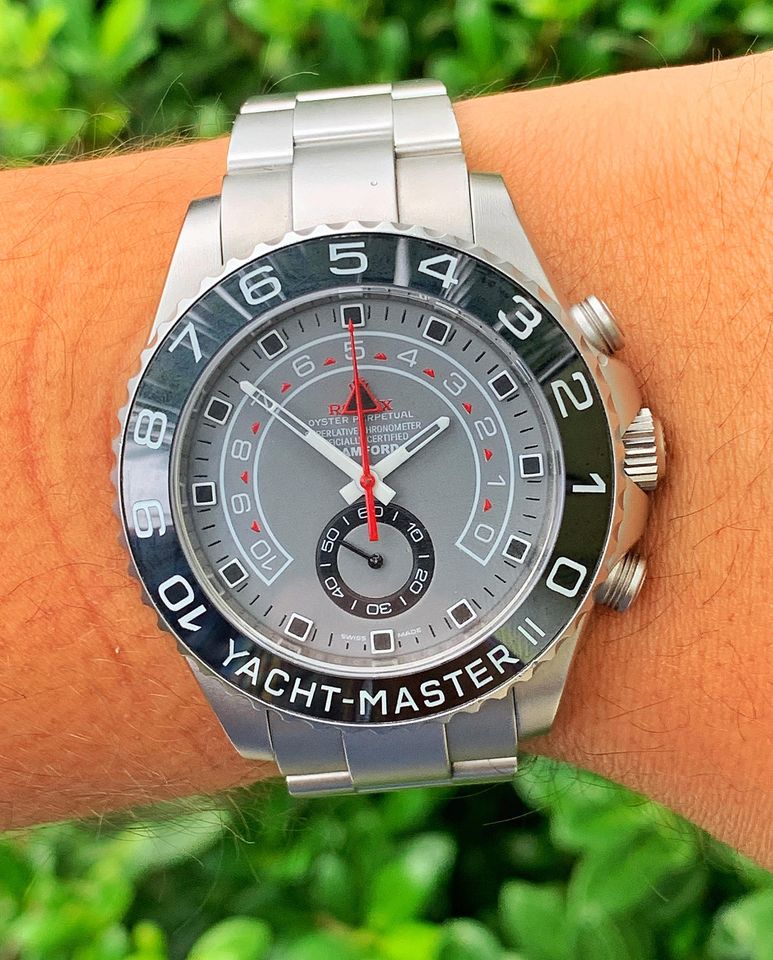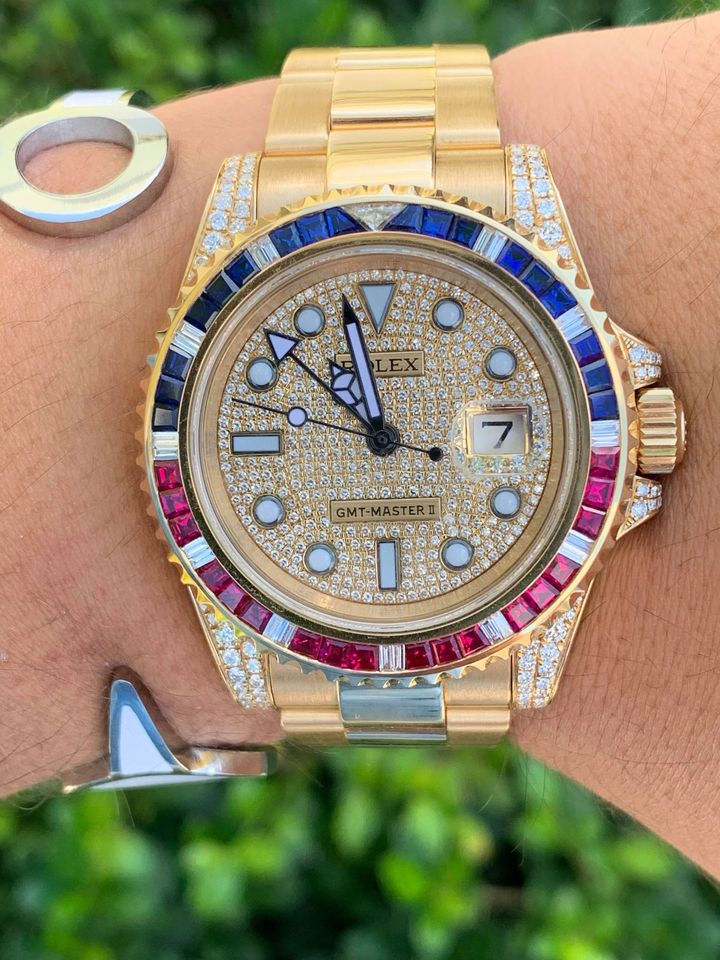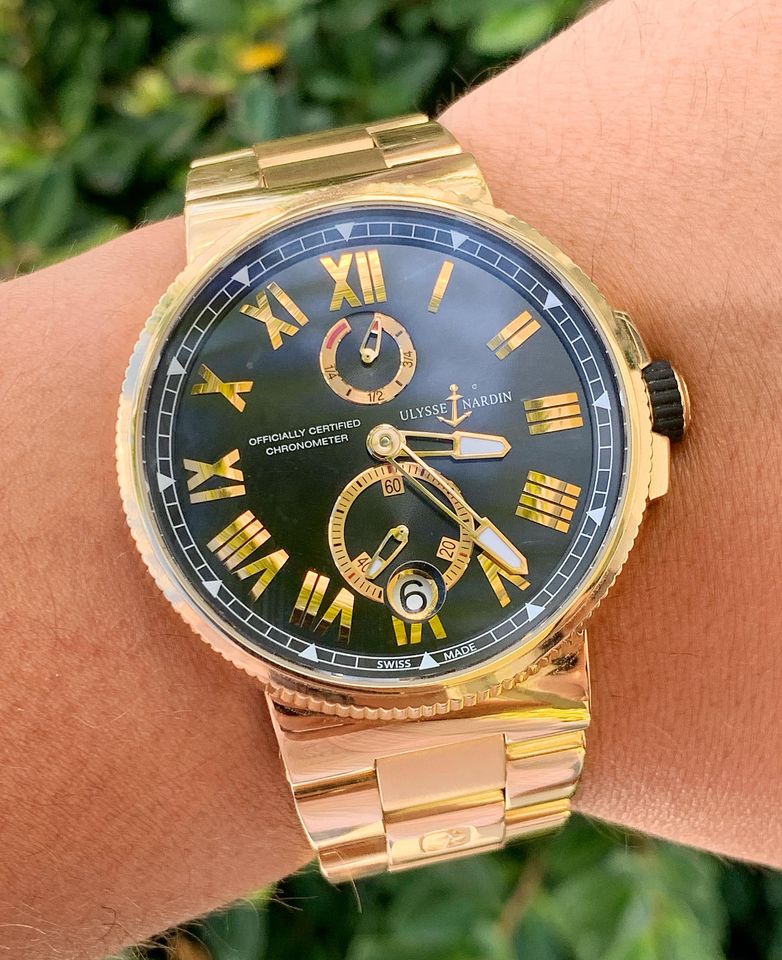1Off, Custom, and Scarcity Play watches. The good, the bad, and the ugly.
You don’t always have to stick to the most popular timepieces when trading. Obviously the more popular the brand and the model, the more audience viewership there will be when you list your watch. Keep in mind though, typically the most popular models sought after in the market or the ones with the most supply on the market are going to be tougher to make sizable profits on.
There are amazing opportunities to make an average of $3,500 – $14K profit margins on pieces that aren’t so popular. These are generally known as scarcity play pieces (as defined in detail in WTA Part 2 course). These types of more rare watches can be a huge hit or miss. You have to know what you’re looking for and the difference between what is a winner and what is just a bomb.
In order to help you gain some clarity around this, I’m going to break down three different types of categories that can make you amazing margins. They are the 1 off, the custom piece, and the scarcity play.

1 Off
One off pieces are literally what you think. Pieces where only 1 example was ever made. These can be straight from the manufacturer, or they can also be a combo of the next category (custom). 1 off pieces are usually exotic aesthetically – meaning they have bold colors, or colors that are not normal for the brand/model. They can also be a complete shake up or slight variant of the case shape but that’s not as common since most manufacturers won’t take the time/money to do that for just a single unit. 1 off pieces are more common when a design house like Bamford gets a hold of one. See the Rolex Yachtmaster II Bamford Matte Grey Image here for an example. All other Yachtmaster II pieces are either steel, gold/steel or gold in case color. So the matte grey coating with black bezel is the only one they ever made. You will win big if you get your hands on a 1-off piece that is from a very sought after brand and a model that is well known. If you get a 1-off piece from a brand that is less desirable and/or no one really knows of/wants, you’re most likely going to get stuck in the watch and be begging someone to take it off your hands. Desperation can lead to sizable losses, so make sure you get some level of confidence or market buy-in regarding if the design is hot or not before your first purchase. When you resell, be prepared to field questions about why the watch is different and how you can add comfort and confidence from the buyers’ side in order to close the deal. Oftentimes you’ll get a lot of initial interest, but then the buyer gets nervous when they can’t find any information or benchmarks around the variation. Don’t let them flake out, reassure them this piece will be a great conversation starter, and when they’re done with it they can always sell it for potentially more. Also keep in mind that it’s easier to trade 1-off pieces with other traders who find them exiting because there’s no comps, so there’s margin play and room for flexibility.

Custom
Custom pieces vary widely in options. The major difference between custom pieces and 1-offs are that there are more examples made on the market even if none are actually able to be purchased at this exact moment and even if they’re not by the same creator. Custom pieces are typically watches with diamond work, stone work, different bezels added (color, aftermarket, original but from different reference) and sometimes coatings like DLC or PVD. If you want to know the difference between coating types Google it. Custom pieces again can be a hit or miss.
You really want to question who originally did the work on the watch, and how much of a reputation that person/company has in the market. For example, if I have a custom Rolex GMT Master II Gold with diamond and stone work done by a dealer who is well known and has exceptional clout, I can refer to that when reselling, and it helps the buyer feel good about the quality and support if something goes wrong. However, if some random person, or lesser known company did some DLC coating on a Panerai and it looks weird you probably have a dud on your hands. Remember custom pieces should also be ones that enhance the aesthetic of an already sought after and exciting model. It shouldn’t be an uglier variant of a popular model or a cooler version of a non-known brand/model that doesn’t hold resale value. So don’t buy crazy custom Corums or Carl Bucherers. Stick to AP Royal Oak Offshore Marcus, Rolex Bamford, Classy/Clean stone and diamond work on Patek and Cartier. These will do well and make you lots of money.

Scarcity
While scarcity play watches can cover a wide range of pieces and can also overlap with the previous two categories, scarcity play watches tend to align more with actual manufacturer original made variants of watches that look super cool and are hard to find. Scarcity play flips are a triple threat. They are a slight one or two variations from a hot watch model. So think for example if a Panerai Luminor in gold usually comes with a black dial and a rubber strap, then you find one with a blue dial and all gold bracelet. If you have the only one available anywhere, and/or there are very few comps then it is really hard for buyers to beat you up on price. Also, if the watch is even more attractive than the regular more popular version, you can sell it at a premium. Secondly, they already have the search traffic of the regular variant so it’s not like people can’t stumble upon the scarcity version. When they do, they get excited because they didn’t even know that one existed until you show it to them. So now they want it, they have an emotional connection to the watch, and when they go to research it, they realize you have one of the only ones and are probably the best bet at getting it. The third benefit is obviously the margin spread. If you buy the watch right you should be making a killing. Keep in mind it can work to your benefit when you buy the watch as the original seller may not be doing a good job marketing it and hasn’t gotten a lot of hits on it because no one knows it exists. But if you can market it better, you will reap the benefits. Be warned though, many people think they are buying a scarcity play watch when really they are just buying an undesirable not so scarce variant of a model, or buying something so hated and ugly, you can’t pay someone to take it off your hands.
This is where traders end up upside down on bad investments. To ensure you have confidence in what a true scarcity play is it’s highly recommended to get Part 2 and see the full breakdown.
Happy trading, and please do share your scarcity play case studies in the Watch Trading Academy Facebook insider group!
